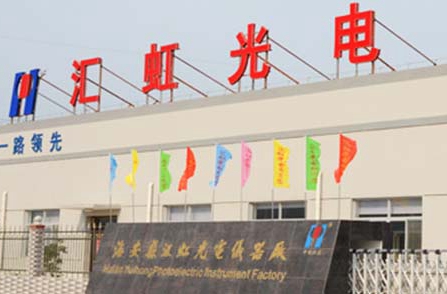
 Peking University
Peking University Fudan University
Fudan University Huazhong University of Science and Technology
Huazhong University of Science and Technology Jiangsu Polytechnic Institute
Jiangsu Polytechnic Institute anjing University of Science & Technology
anjing University of Science & Technology Tsinghua University
Tsinghua University Xiamen University
Xiamen University Tianjin University
Tianjin University Northwestern Polytechnical University
Northwestern Polytechnical University Zhejiang University
Zhejiang University Zhejiang Jiashan she Bang optical glass factory
Zhejiang Jiashan she Bang optical glass factory The test research of Wuhan Jewelry Institute of China University of Geosciences
The test research of Wuhan Jewelry Institute of China University of Geosciences China Academy of Sciences, Shanghai Institute of Technical Physics
China Academy of Sciences, Shanghai Institute of Technical Physics Xi'an Institute of Optics and Precision Mechanics,Chinese Academy of Sciences
Xi'an Institute of Optics and Precision Mechanics,Chinese Academy of Sciences

Nanjing University of Science & Technology(Nanjing University of Science and Technology)Is the industry of the people's Republic of China and the Ministry of information directly under a so industry and trade, science, engineering, arts, economics, management, law, education, arts etc. of the coordinated development of the multidisciplinary national key university, is the national "211 Project", "985 project advantage subject innovation platform" key construction colleges and universities is one of the named "111 project", "excellent plan", "Sino Russian University of technology alliance", known as "weapon technology talent cradle" reputation.
[for details]
Peking University(Peking University),Referred to as Peking University, was born in 1898, the beginning of the Capital University, is the first National University in modern [1] Chinese That is the first to "University" identity and name and the establishment of the school, its establishment marked the beginning of modern higher education Chinese. The north is China since modern times only to the identity of the country's highest institution founded the school, the first is the highest national education administrative organs, the exercise of the Ministry of education function, unified management of national education. Peking University gave birth to the China's earliest modern educational system, and created the earliest Chinese arts, science, social science, agriculture, medicine, and other disciplines of University, is in modern times of China's higher education founder.
[for details]
Jiangsu Polytechnic Institute Located in the south of the Yangtze River, the Yangtze River Delta hinterland -- a historical and cultural city of Jiangsu city of Changzhou province. Schools to create in 1984, is dominated by industry, science, economics, management, art, religion, literature, law and other multidisciplinary coordinated development, has a distinctive feature of the provincial general undergraduate colleges and universities.
[for details]
Northwestern Polytechnical University(Northwestern Polytechnical University),Referred to as "the west", is located in the ancient capital of Xi'an is industry of the people's Republic of China and the Ministry of information directly under a so the aviation, aerospace, marine engineering features, science and technology, mainly, tube, culture, economics, law coordinated development research, multidisciplinary and open type is a national key university, is a national "985 Project" and "211 Project" key construction colleges and universities, selected the "2011 plan", "111 project", "excellent engineer education and training program, is a member of the excellent university alliance", "Sino Russian University of technology alliance", pipe vice ministerial level institution, a research graduate school.
[for details]
Haian county hui hong photoelectric instrument factory is a middle area a company specializing in the production of optical glass factory, founded in 1985, committed to the different kinds of optical glass, precision optical lens, optical components, optical coating, photoelectric devices such as product development, production and sales.
Hui hong photoelectric for over 30 years in well in the domestic market at the same time, actively explore the international market, the introduction of new and high technology, high precision equipment and advanced production technology, enterprise has passed the ISO: 9001 quality management system certification, environmental certification, etc.
Hui hong photoelectric main products are various specifications of colorless optical glass, coloured optical glass, color filter, filter, filter, laser glass, quartz glass, insulated glass, uv black glass, through near infrared (far infrared), bandpass, visibility function correction, neutral gray glass (ND filter), polarizing film, silicon photocell, etc.
[for details]